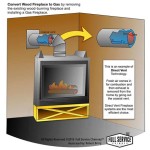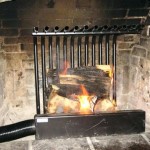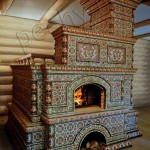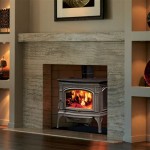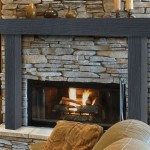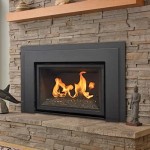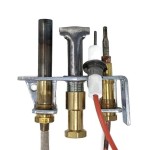Marco Wood Burning Fireplace: A Comprehensive Guide
The Marco wood burning fireplace represents a long-standing tradition of hearth warmth and architectural appeal in residential spaces. With a reputation built on durability and efficiency, Marco fireplaces offer a diverse range of models designed to suit varying heating needs and aesthetic preferences. This article provides a comprehensive overview of Marco wood burning fireplaces, encompassing their features, benefits, installation considerations, and maintenance requirements.
Marco wood burning fireplaces are engineered to provide supplemental heating for a home, creating a cozy and inviting atmosphere. These fireplaces utilize the combustion of wood as their primary fuel source, offering a renewable and often cost-effective alternative to gas or electric heating options. The company's commitment to quality craftsmanship and adherence to industry safety standards have solidified Marco's position as a reputable manufacturer in the fireplace market.
Key Features of Marco Wood Burning Fireplaces
Marco wood burning fireplaces incorporate several key features that contribute to their performance and appeal. These features extend beyond basic functionality to encompass elements of safety, efficiency, and aesthetic design.
First, the firebox construction is a critical component. Marco fireboxes are typically constructed from heavy-gauge steel, which provides exceptional durability and heat retention. This robust construction ensures the fireplace can withstand the high temperatures generated during wood combustion without warping or compromising structural integrity. The firebox design also plays a role in optimizing airflow, promoting efficient and complete combustion of the wood fuel.
Second, the presence of a refractory lining is another significant feature. Refractory materials, such as firebrick or ceramic fiberboard, are used to line the interior of the firebox. These materials are specifically chosen for their ability to withstand extreme temperatures and reflect heat back into the firebox. This reflective property enhances combustion efficiency and allows the fireplace to radiate heat more effectively into the surrounding room. The refractory lining also protects the steel firebox from direct exposure to the intense heat, further extending the lifespan of the fireplace.
Third, air wash systems are often integrated into Marco wood burning fireplaces. An air wash system utilizes a carefully directed stream of air to keep the glass door clean and clear. This airflow prevents soot and creosote from accumulating on the glass, ensuring an unobstructed view of the fire. The air wash system enhances the aesthetic appeal of the fireplace and reduces the frequency of glass cleaning.
Fourth, many Marco models include a damper system. The damper controls the airflow through the chimney, allowing the user to regulate the burn rate and heat output of the fireplace. When the fireplace is not in use, the damper can be closed to prevent drafts from entering the home and to minimize heat loss. Proper damper operation is crucial for maintaining fireplace efficiency and preventing potential safety hazards.
Finally, aesthetic considerations are evident in the design options offered by Marco. The company provides a variety of facings, surrounds, and door styles to complement different architectural styles and interior décor preferences. These options allow homeowners to customize the appearance of their fireplace to create a focal point that seamlessly integrates with the overall design of the room.
Benefits of Choosing a Marco Wood Burning Fireplace
Selecting a Marco wood burning fireplace offers several distinct benefits, ranging from cost savings to environmental considerations.
One of the primary advantages is the potential for cost savings. Wood is often a more affordable fuel source than natural gas, propane, or electricity, particularly in regions where wood is readily available. By using a wood burning fireplace for supplemental heating, homeowners can reduce their reliance on more expensive energy sources and lower their monthly heating bills. Of course, the actual cost savings will depend on factors such as the price of wood, the efficiency of the fireplace, and the overall heating needs of the home.
Another benefit lies in the environmental aspect of wood burning. While wood combustion does produce emissions, wood is considered a renewable resource when sustainably harvested. Unlike fossil fuels, wood can be replenished through responsible forestry practices. For homeowners seeking a more environmentally conscious heating option, a wood burning fireplace can be a viable alternative, especially when used in conjunction with modern EPA-certified models that are designed to minimize emissions.
Beyond the practical advantages, a Marco wood burning fireplace provides a unique ambiance and aesthetic appeal. The crackling sound of burning wood and the mesmerizing dance of the flames create a warm and inviting atmosphere that is unmatched by other heating systems. A fireplace can serve as a central gathering point for family and friends, fostering a sense of comfort and relaxation.
Furthermore, Marco fireplaces offer a degree of energy independence. In the event of a power outage, a wood burning fireplace can provide a reliable source of heat, ensuring the comfort and safety of the home occupants. This feature can be particularly valuable in regions prone to severe weather events or grid instability.
Finally, the durability and longevity of Marco fireplaces contribute to their long-term value. The robust construction and high-quality materials used in their manufacturing ensure that these fireplaces can withstand years of use with proper maintenance. This durability translates into a lower total cost of ownership compared to less durable heating appliances that may require frequent repairs or replacements.
Installation and Maintenance Considerations
Proper installation and regular maintenance are essential for ensuring the safe and efficient operation of a Marco wood burning fireplace. Neglecting these aspects can lead to performance issues, safety hazards, and a reduced lifespan of the appliance.
Installation should always be performed by a qualified professional who is familiar with local building codes and safety regulations. The installation process typically involves several key steps, including selecting an appropriate location for the fireplace, ensuring proper chimney venting, and connecting the fireplace to the home's structure. Proper clearances to combustible materials must be maintained to prevent fire hazards. A professional installer will also ensure that the fireplace is properly sealed and that all components are functioning correctly.
Chimney venting is a critical aspect of fireplace installation. The chimney provides a pathway for the exhaust gases to escape the home. A properly sized and installed chimney is essential for ensuring adequate draft and preventing the buildup of dangerous carbon monoxide. The chimney should be regularly inspected for creosote buildup, which is a flammable substance that can accumulate over time and pose a significant fire risk. Professional chimney sweeping is recommended at least once a year, or more frequently if the fireplace is used heavily.
Regular cleaning and maintenance are also crucial for maintaining fireplace performance and safety. The firebox should be cleaned periodically to remove ash and debris. The glass door should be cleaned with a specialized fireplace glass cleaner to remove soot and creosote buildup. The damper should be inspected regularly to ensure that it is functioning properly and that there are no obstructions in the chimney flue.
Wood selection plays a significant role in fireplace performance and creosote buildup. Seasoned hardwood is the preferred fuel source for wood burning fireplaces. Seasoned wood has a lower moisture content than green wood, which results in more efficient combustion and less creosote production. Avoid burning treated wood, painted wood, or other materials that can release harmful chemicals into the air.
Finally, understanding and adhering to the manufacturer's recommendations for operation and maintenance is essential. The owner's manual provides detailed instructions on how to safely and efficiently operate the fireplace, as well as guidance on routine maintenance procedures. Following these instructions will help to prolong the lifespan of the fireplace and ensure its continued safe operation.
In summary, the Marco wood burning fireplace offers a blend of traditional warmth, modern design, and efficient heating capabilities. By understanding the fireplace's features, benefits, and maintenance requirements, homeowners can make informed decisions regarding their heating options and enjoy the comfort and ambiance of a wood burning fireplace for years to come.

Matte Black Marco C36cf C36hc C36hci Cm36hc Cm36hcd Fireplace Door

Discontinued Real Flame Marco Electric Fireplace Walnut 5757e Wn

Universaljolly Evo 80 Quick Wood Burning Fireplace Insert Class A By Jolly Mec Design Marco Longo

Marco Builders Wood Burning Fireplace

Marco 41 Prefab Glass And Track Fireplace Door

Artisan Marco Marble Fireplace Design

The Ez Door For Marco Fireplaces Fireplace Replacement Installation

Matte Black Marco B36cf B36cfi Bm36hc Bm36hcd B36hc B36hci Fireplace Door

Electric Wall Mounted Fireplace With Pebble Flame Effect Marco Paul

Universaljolly Evo 80 Quick Wood Burning Fireplace Insert Class A By Jolly Mec Design Marco Longo

